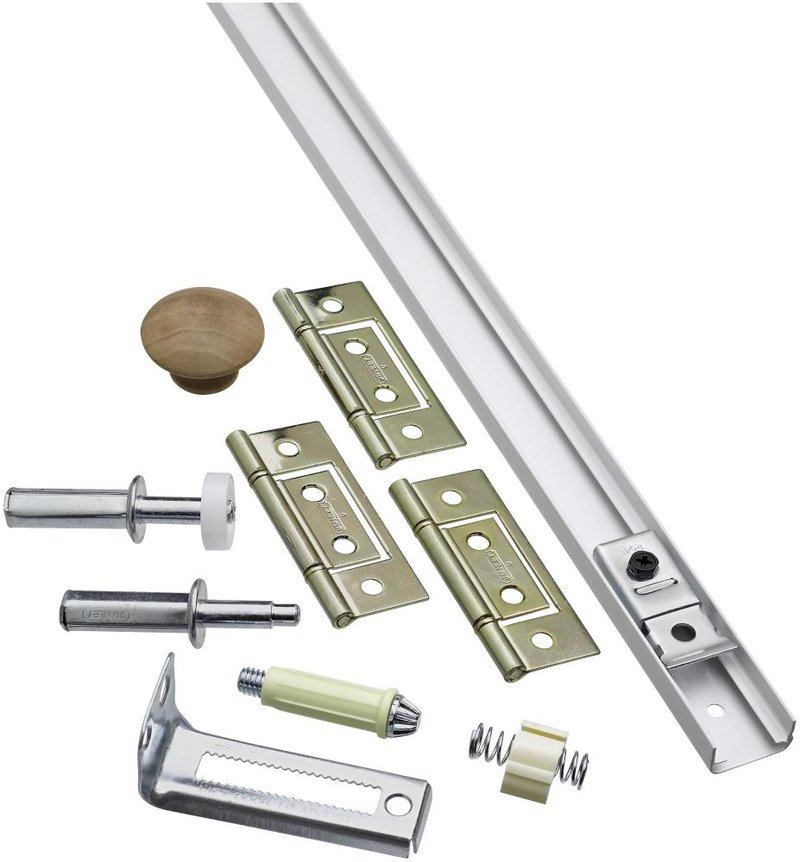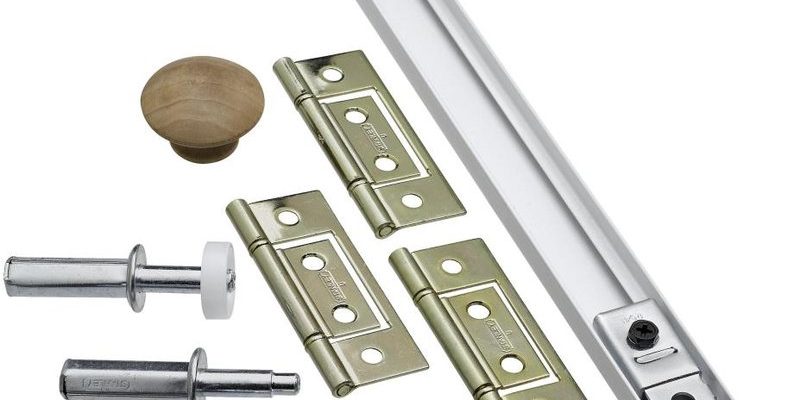
Choosing the right hardware can feel overwhelming, especially if you’re new to home improvement projects. Whether you’re looking at hinges, handles, or locks, it’s crucial to consider materials and designs that enhance functionality while also blending well with your space. So, grab your coffee, and let’s explore the options that will make your utility closet both practical and easy to use.
Why Hardware Choice Matters
When it comes to utility closet doors, the hardware you choose can make or break your experience. Think of it this way: you wouldn’t buy a fancy sports car and skimp on the tires, right? The same logic applies here. Well-selected hardware ensures longevity and smooth operation.
Choosing durable hardware means fewer repairs down the line. Imagine diving into a closet only to find a handle that’s come loose. It’s frustrating and can deter you from opening that door in the future. On the other hand, investing in quality hardware sets the stage for efficiency and reliability. It can also elevate the look of your closet, making it feel more organized and pulled together.
Moreover, the right hardware can enhance accessibility. If you have a busy household or if anyone in your home faces mobility challenges, you want to ensure that the door opens effortlessly. Choosing the right type of handles and locks can make a huge difference in how easily you can access what’s inside your closet.
Types of Hardware for Utility Closet Doors
When choosing hardware, you’ll come across several types. Each serves a unique purpose and comes with its pros and cons. Here’s a breakdown:
1. Hinges
Hinges are the unsung heroes of door hardware. They provide the pivot point for your closet door. When selecting hinges, look for materials like stainless steel or brass, which offer excellent strength and resistance to rust.
Consider hinge styles too. Continuous hinges (also known as piano hinges) run the entire length of the door and offer extra support. They’re great for heavy doors or those that get frequent use. Standard butt hinges are also common and work well for lighter doors. Just remember to choose hinges that match your door weight for optimal performance.
2. Handles
The handles on your utility closet door are critical for ease of access. Options like pull handles and knobs are both popular. Pull handles are often easier for quick access, especially if your hands are full. They come in various styles, from modern to traditional, so you can choose one that fits your décor.
If you have kids or elderly family members, consider installing handles that require less grip strength, like lever handles. These can be pushed down with the elbow if your hands are occupied, making access seamless.
3. Locks
If your utility closet contains items that need to be secured, such as cleaning supplies or tools, installing a lock is essential. There are various lock types, including tumbler locks and cam locks. Tumbler locks provide better security but can be more complex to install. On the other hand, cam locks are easier to install and provide basic security.
For convenience, consider a keyless entry lock. This type allows access without fumbling for keys, which can be a lifesaver when your hands are full.
4. Guides and Tracks
If you’re opting for sliding doors in your utility closet, you’ll need guides and tracks for smooth operation. Look for durable materials like aluminum for the track and rubber or nylon for the guides. When installed correctly, this hardware helps your doors slide open effortlessly, keeping your space functional and stylish.
It’s also wise to think about the finish of your hardware. Picking a finish that matches or complements your other home fixtures can enhance the overall aesthetic, making your utility closet feel more integrated into the home.
Choosing Materials for Durability
The materials your hardware is made from can greatly impact its durability. Here’s what to consider:
1. Stainless Steel
Stainless steel is often the go-to choice for hinges and handles. It’s resistant to rust, corrosion, and wear, making it ideal for utility closets, which can sometimes be damp or have cleaning products that splash.
2. Brass
Brass is another durable option, known for its strength and beautiful finish. It can add a touch of elegance to your space. However, it might require a little more maintenance compared to stainless steel, as it can tarnish over time.
3. Plastic or Nylon
For specific hardware, such as sliding door guides, plastic or nylon can be beneficial. These materials are lightweight and resistant to corrosion, even in humid conditions, making them a solid choice for utility applications.
Choosing the right materials means your hardware will stand the test of time, ensuring your utility closet remains functional and easy to access for years to come.
Installation: Making It All Come Together
Now that you have your hardware picked out, you’ll need to consider installation. It may seem daunting, but here’s how you can approach it:
1. Gather Your Tools
Having the right tools on hand can make installation a breeze. You’ll typically need:
- Drill
- Screwdriver
- Measuring tape
- Level
- Hammer
2. Follow Instructions Carefully
Most hardware comes with installation instructions. Take your time to read through them—skipping steps can lead to mistakes. For hinges, for example, you’ll often need to pre-drill holes, ensuring everything aligns properly.
3. Double-Check Everything
Before securing anything completely, double-check that everything lines up and functions smoothly. Open and close the door several times to ensure it swings or slides without resistance.
Taking a careful and methodical approach to installation helps you avoid headaches down the road.
Maintaining Your Utility Closet Hardware
Now that you’ve installed your hardware, maintaining it is key to keeping everything working smoothly.
1. Regular Cleanings
Dust and dirt can accumulate over time, making hinges squeak or handles sticky. A quick wipe-down with a damp cloth can keep everything in good shape. For hinges, a little WD-40 can go a long way in maintaining smooth operation.
2. Checking for Wear
Regularly check your hardware for signs of wear or damage. If a handle feels loose or a hinge is starting to show rust, address it sooner rather than later. This can prevent bigger problems and ensure your closet remains functional.
3. Replacing Parts
Don’t hesitate to replace parts that are worn out. It’s often a quick fix and can save you the hassle of dealing with a malfunctioning door later. Plus, you’ll keep your utility closet looking and functioning at its best.
Hardware might not seem like the star of the show, but it plays a vital role in the overall performance of your utility closet.
Final Thoughts
Choosing the right hardware for your utility closet doors is all about balancing durability and accessibility. By selecting quality materials and designs, you’re setting yourself up for a functional space that operates smoothly. Whether it’s hinges, handles, or locks, each component contributes to the overall experience.
Remember, investing in good hardware isn’t just about aesthetics but also about ensuring your utility closet can handle the day-to-day demands of your life. So, take your time in selecting the best options and enjoy the ease of access and durability they provide. Happy organizing!
